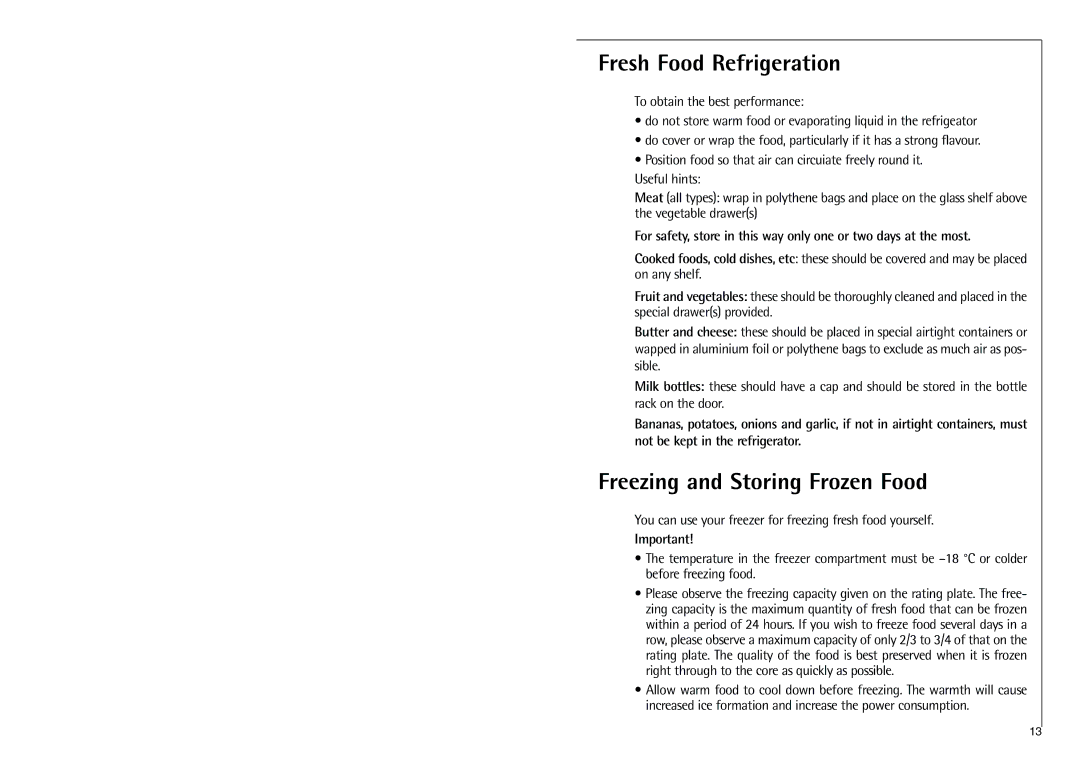
Fresh Food Refrigeration
To obtain the best performance:
•do not store warm food or evaporating liquid in the refrigeator
•do cover or wrap the food, particularly if it has a strong flavour.
•Position food so that air can circuiate freely round it.
Useful hints:
Meat (all types): wrap in polythene bags and place on the glass shelf above the vegetable drawer(s)
For safety, store in this way only one or two days at the most.
Cooked foods, cold dishes, etc: these should be covered and may be placed on any shelf.
Fruit and vegetables: these should be thoroughly cleaned and placed in the special drawer(s) provided.
Butter and cheese: these should be placed in special airtight containers or wapped in aluminium foil or polythene bags to exclude as much air as pos- sible.
Milk bottles: these should have a cap and should be stored in the bottle rack on the door.
Bananas, potatoes, onions and garlic, if not in airtight containers, must not be kept in the refrigerator.
Freezing and Storing Frozen Food
You can use your freezer for freezing fresh food yourself.
Important!
•The temperature in the freezer compartment must be
•Please observe the freezing capacity given on the rating plate. The free- zing capacity is the maximum quantity of fresh food that can be frozen within a period of 24 hours. If you wish to freeze food several days in a row, please observe a maximum capacity of only 2/3 to 3/4 of that on the rating plate. The quality of the food is best preserved when it is frozen right through to the core as quickly as possible.
•Allow warm food to cool down before freezing. The warmth will cause increased ice formation and increase the power consumption.
13
